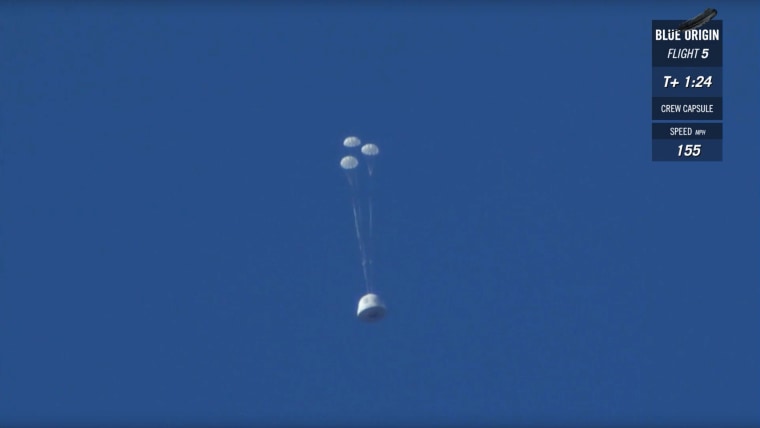Despite Blue Origin’s own predictions that its New Shepard rocket would crash and burn during a test in the Texas desert on Wednesday, the booster and its emergency escape capsule both successfully landed.
The test was meant to determine the feasibility of allowing human space tourists to safely bail out of a disabled (aka flaming) spacecraft.
About 45 seconds after liftoff, the rocket booster separated as planned, igniting the escape motor on the crew capsule, allowing it to safely land.
Being able to safely evacuate passengers is considered fairly crucial before the Jeff Bezos-led company begins sending humans into space next year.
It's been a busy time for Blue Origin as it moves ahead with its ambitious space travel timeline.
Last month, Bezos shared plans for a massive new rocket family that he said could launch humans and satellites into orbit by the end of the decade.
Related: Bezos Has a Plan for a Behemoth Blue Origin Rocket
The rocket was shown in two sizes, the 270-foot tall New Glenn 2-stage and the 313-foot tall New Glenn 3-stage and appeared to tower over competitors in a diagram Bezos shared on Twitter.
Bezos' Blue Origin has followed the mantra of "launch, land, repeat," with the company's New Shepard rocket, named for astronaut Alan Shepard.
The rocket has launched, gone into sub-orbit and landed its booster at a Texas launch site five times since last November.
